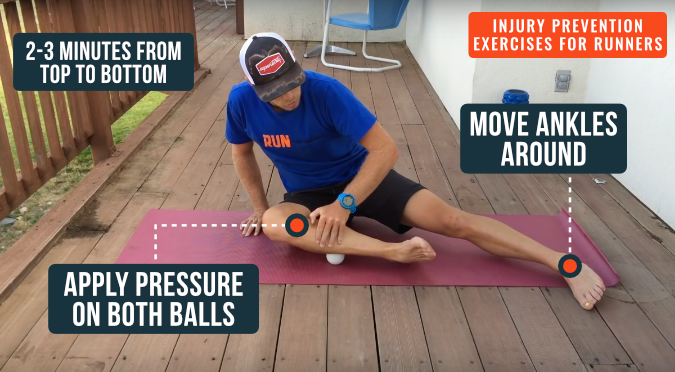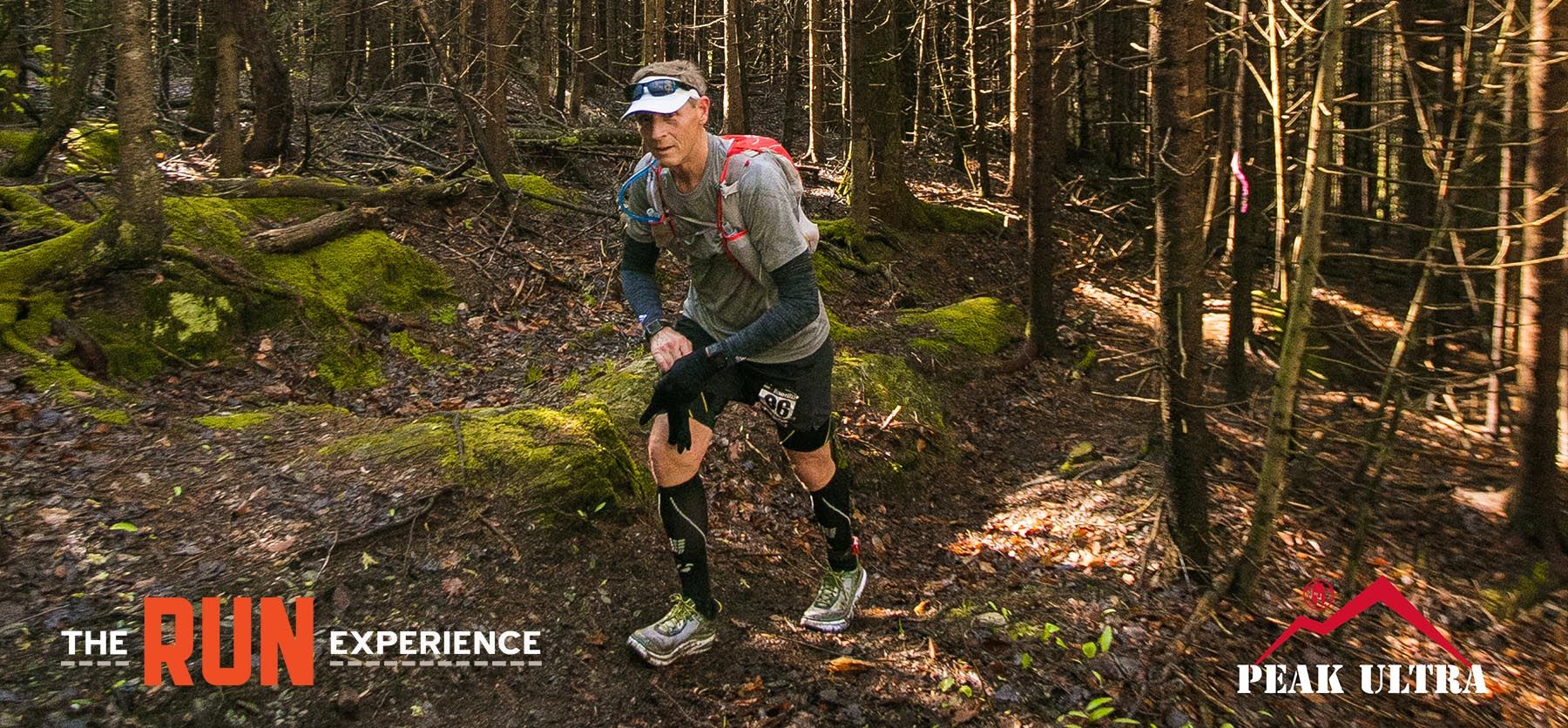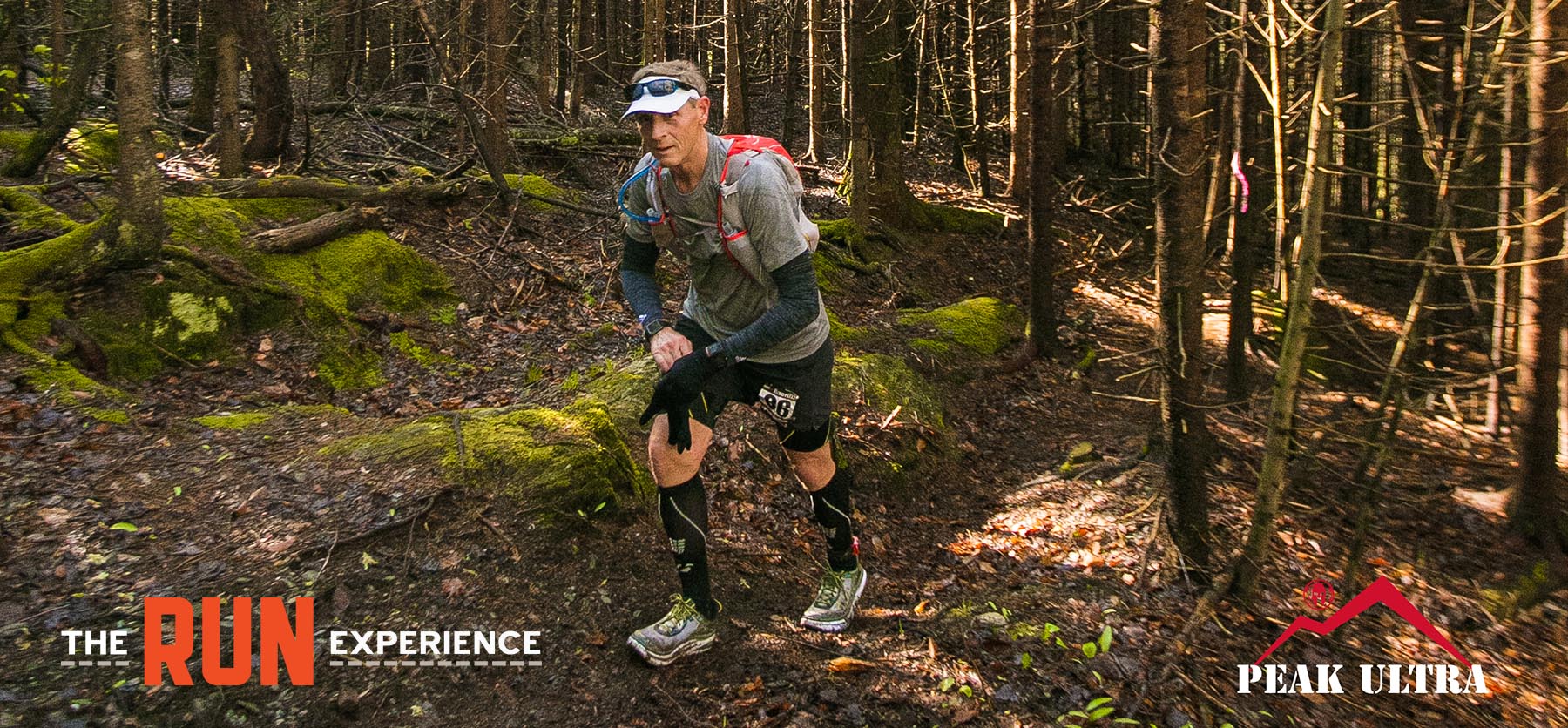We’re excited to partner with our friends at The Run Experience at this year’s Peak Ultra. They will be on site Friday night to offer a free clinic they’ve designed just for our race, and will offer a free mini-clinic for the 10-mile fun run participants on Saturday morning! Not only that, they are giving anyone who registers for the Peak Ultra a free 30-day subscription to their program.

3 Injury Prevention Exercises for the Lower Leg from The Run Experience
At The Run Experience, we’re always coming up with new injury prevention exercises for YOU, our runners! In this post, we take a look at some of Coach Kirk’s favorite “go-to”s for the lower leg!
WHY ARE INJURY PREVENTION EXERCISES SO CRUCIAL TO YOUR TRAINING?
Just like the car that you depend on to operate properly day in and day out, your running body needs REGULAR maintenance.
When either of these breaks down, chances are that some preemptive investigation could’ve helped us avoid the setback altogether.
We believe in getting your injuries BEFORE they get you. Using 5-7 minutes of your day to help prevent months of injury/recovery/time on the couch is ALWAYS worth it.
INJURY PREVENTION EXERCISES: THE BROOMSTICK BASH!
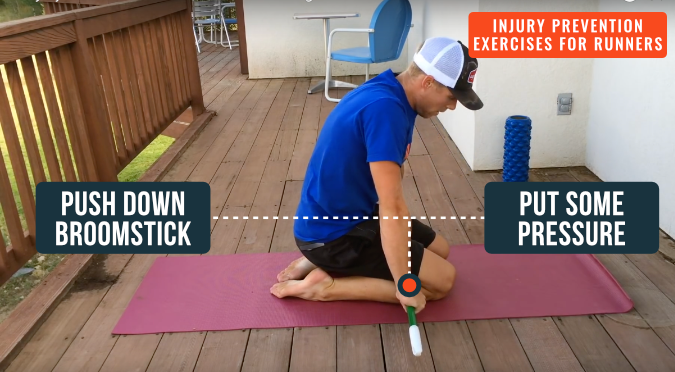
The best part about all of our injury prevention exercises is that you can do them at home with easy to find objects!
So take a minute and go grab a broomstick.
Don’t worry, we’ll explain further.
Got it?
We’re going to use it to get deep into our calf (and soleus specifically) because I think we can all agree how tight these guys get during and after a run.
Here’s how the broomstick bash works:
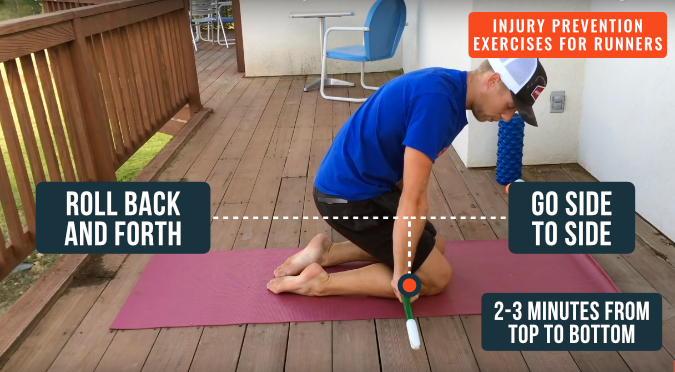
- Find a kneeling position on the ground. Butt sits back on the heels.
- Now you’re going to sandwich the broomstick between your hamstrings and calves.
- From here you’re going to start using the stick like a rolling pin.
- Use your arms to apply as much pressure as you’re comfortable with.
- Start just below the knee and work your way down to the top of the achilles.
- Alternate between rolling the broomstick forward/backward and making a “sawing” motion side-to-side when you get to a particularly tight spot.
- Spend about 2-3 minutes working down the length of the calves.
Why do we love this one so much?
As runners, we take the brute of our daily workouts in our legs. And more specifically, in our lower legs.
Our achilles’ tendons always seem to be the most tender, but the reality here is that the problem starts with the top of the chain, the calf.
Regularly taking care of these muscles will help to lengthen and calm the impact on the achilles’ tendons.
INJURY PREVENTION EXERCISES: THE INVERSION/EVERSION SANDWICH!
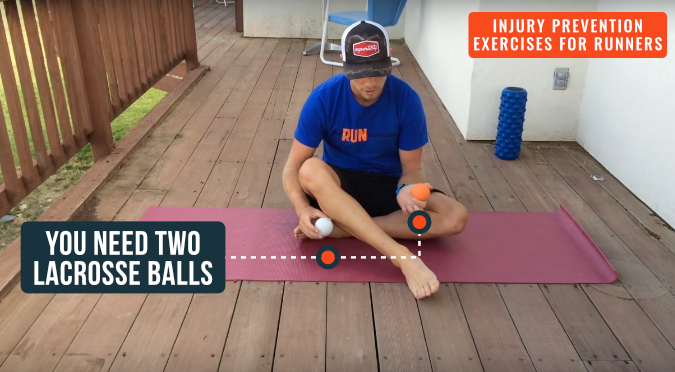
All you’ll need for this one is a pair of lacrosse balls, or 2 balls of similar size and density.
We’re going to use them to get after your peroneals and the posterior side of your tibia (shin).
These muscles control your footstrike, pronation, supination, basically how and why your foot hits the ground the way it does.
Like the calves, they get tight QUICK!
Here’s how the inversion/eversion sandwich works:
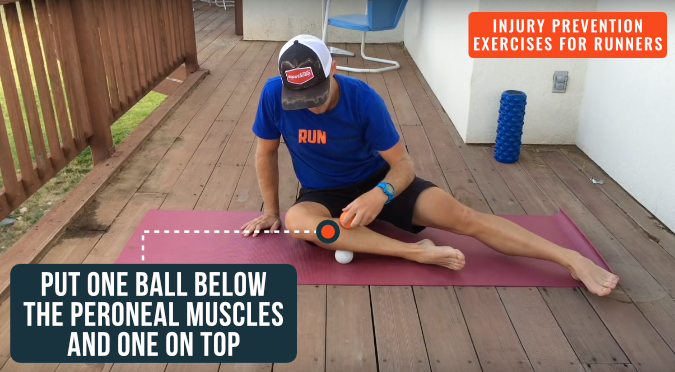
Have a seat on the ground, with one leg bent “indian style” in front of you.
- Place one lacrosse ball under the side of the shin closest to the ground.
- Place the other lacrosse ball on the other side of the shin, creating a “sandwich” of lacrosse ball, shin, lacrosse ball.
- From here you’ll use your hands to apply pressure, just to the ball on top of the shin.
- Once you’ve found a level of pressure you can deal with, begin to circle the ankle.
- Also try flexing and pointing the foot, switching circle direction, etc.
- Work up and down the shin, using this same technique, and spending more time on tighter areas.
- Spend 2-3 minutes on each leg.
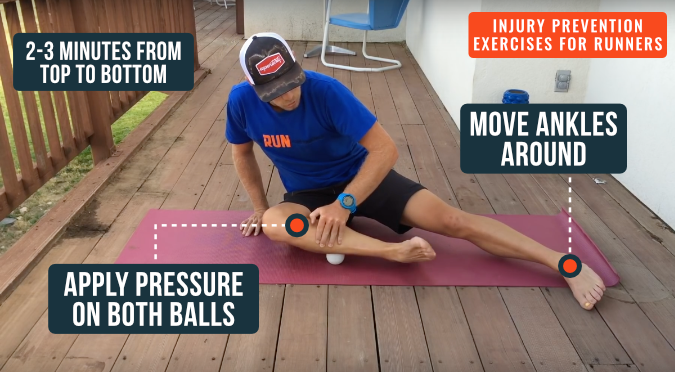
VISIT THE RUN EXPERIENCE TO SEE INJURY PREVENTION EXERCISES NUMBER THREE: THE LOADED PLANTAR FLEX!
Learn more about the Peak Ultra!


